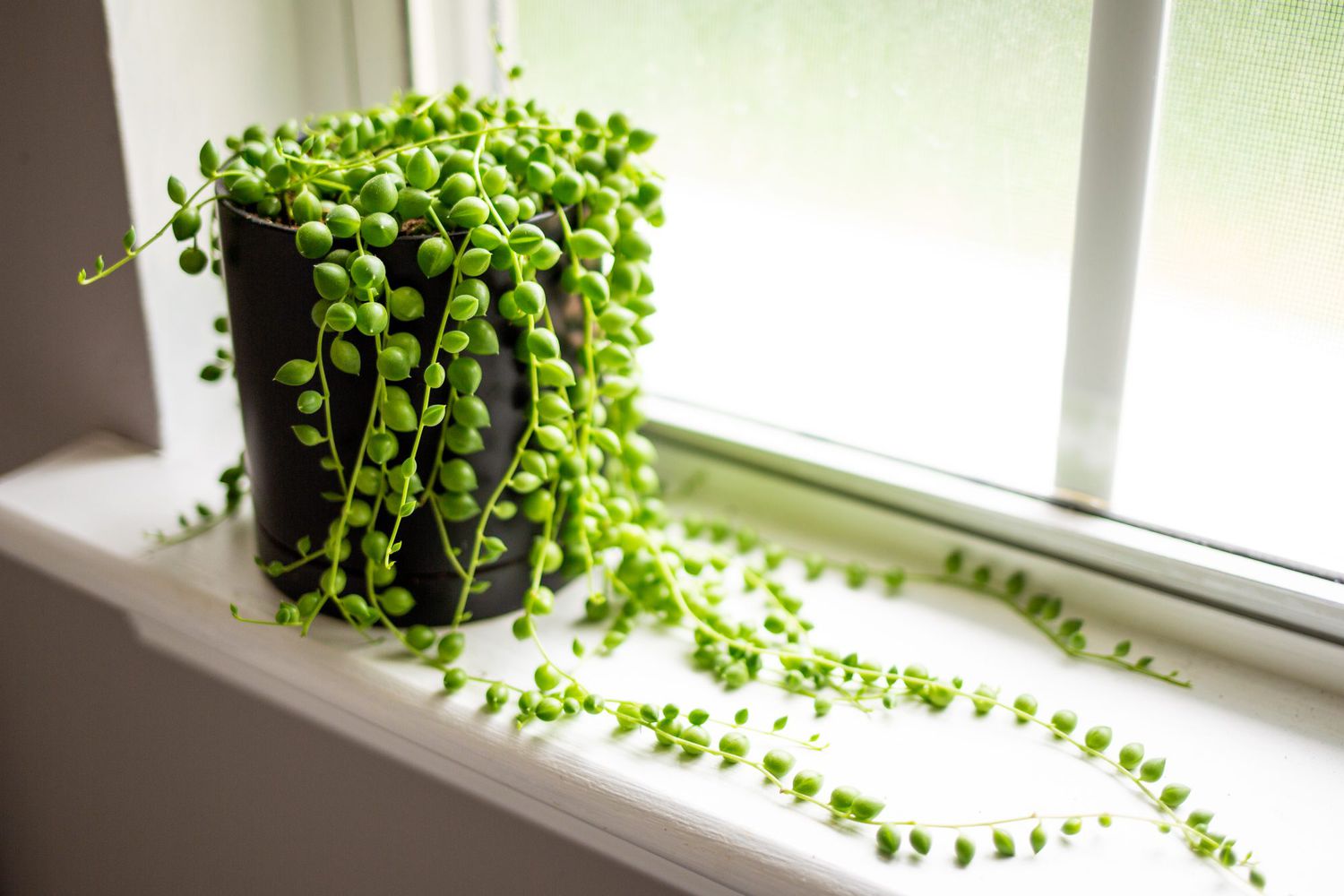The string of pearls (Senecio rowleyanus) is one of the most eye-catching houseplants you can grow. With its trailing beads and elegant cascading vines, it’s perfect for shelves, hanging baskets, and plant walls. But while it looks delicate, this succulent is surprisingly easy to care for — as long as you understand its basic needs.This guide breaks everything down into simple steps so you can confidently grow a thriving string of pearls plant at home.⭐ What Makes the String of Pearls Unique?The string of pearls is a succulent, not a typical leafy houseplant. Each bead stores water, which means:It likes bright lightIt needs less water than regular plantsIt prefers well-draining soilToo much water can cause problemsKeeping those basics in mind is the secret to helping it thrive.☀️ 1. Light: The Most Important StepA string of pearls plant loves bright, indirect sunlight.✔ Best Light Conditions:Near a south- or west-facing windowBright indirect light for 6–8 hours a dayMorning sun is gentle and perfectAvoid strong afternoon rays directly on the plant (can scorch)If You Lack Sunlight:Use a small grow light for 6–8 hours daily.String of pearls grows faster and fuller when it gets the right light.💧 2. Watering: Less Is MoreOverwatering is the #1 reason this plant dies — but once you learn the rhythm, it’s easy.✔ Simple Watering Rule:Water only when the top 1–2 inches of soil feel completely dry.Watering Guide:Spring & Summer: Every 10–14 daysFall & Winter: Every 2–3 weeksAlways use a pot with drainage holesSigns of Overwatering:Mushy, shrinking pearlsYellowing leavesFoul smell from the soilSigns of Underwatering:Pearls look wrinkled or deflatedStems feel thinAim for a balance — slightly dry soil is better than too wet.🪴 3. Soil: Use Fast-Draining Soil OnlyBecause string of pearls is a succulent, it does best in sandy, airy soil.✔ Best Options:Cactus/succulent soil mixOr mix your own:2 parts potting soil1 part perlite1 part coarse sandAvoid heavy soil — it holds too much moisture!🌡 4. Temperature & HumidityString of pearls prefers conditions similar to the average home environment.✔ Ideal Conditions:Temperature: 70–80°F (21–26°C)Night minimum: 55°F (13°C)Normal humidity (no misting required)This plant does not like cold drafts or frost.🍃 5. Fertilizing (Optional but Helpful)Feed lightly during warm months.✔ Fertilizer Tips:Use a succulent fertilizerOnce a month in spring & summerSkip fertilizing in fall & winterOverfeeding can burn the roots, so go easy.✂️ 6. Pruning & ShapingPruning helps your plant look fuller and healthier.✔ How to Prune:Trim long, thin strandsRemove dead or shriveled pearlsClip above a node (where the pearls meet the stem)This encourages new growth and keeps it from looking scraggly.🌱 7. Propagation (Super Easy!)You can grow new plants from just a few cuttings!✔ How to Propagate:Cut a 4–6 inch vineRemove a few bottom pearlsPress the bare stem into succulent soilMist lightly every few daysKeep in bright, indirect lightRoots usually form in 2–3 weeks.🧠 Common Problems & Easy FixesProblem: Pearls shrivelingFix: Water more often — soil is too dry.Problem: Pearls turning mushyFix: Overwatered — let the soil dry out fully.Problem: Stems growing long and baldFix: Increase light exposure.Problem: Soil staying wet too longFix: Switch to faster-draining soil and use a pot with holes.💡 Practical Tips for SuccessRotate the pot weekly so all sides get light.Never let it sit in water — empty saucers after watering.Hang it up for best trailing growth.Dust the pearls occasionally so they can absorb more light.Use room-temperature water to avoid shocking the roots.These small habits make a big difference.🎉 Conclusion: Caring for a String of Pearls Is Easy!With the right light, careful watering, and well-draining soil, you can confidently grow a lush, trailing string of pearls at home. Once you understand its succulent nature, the rest is simple. These plants reward you with fast growth, long vines, and uniquely beautiful beads that make any room feel more alive.

